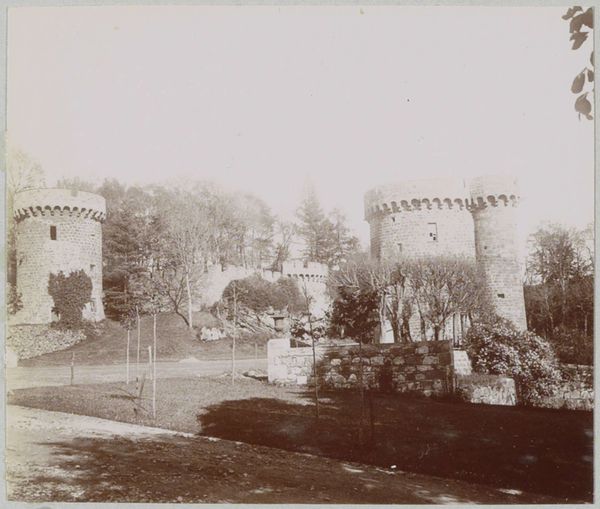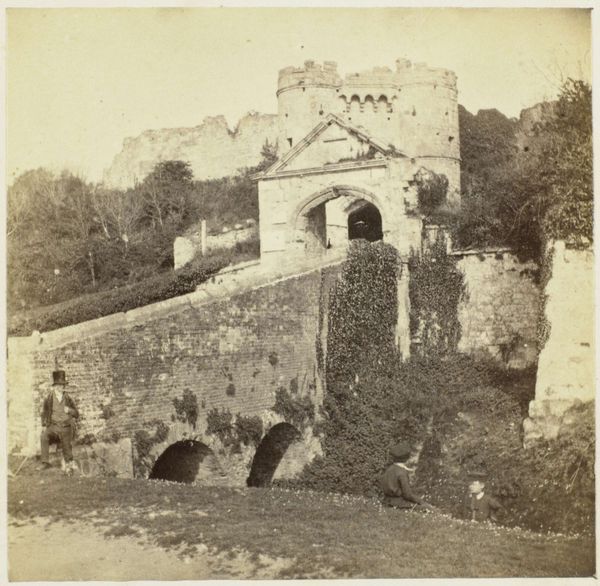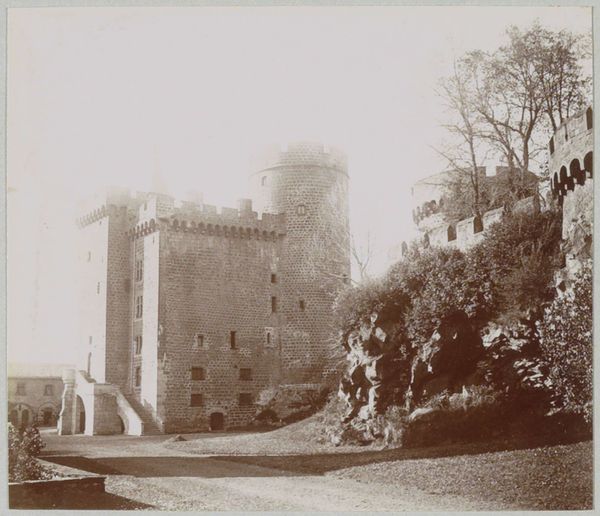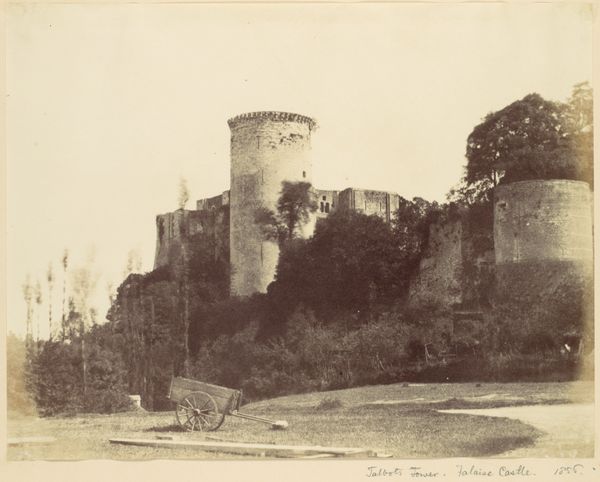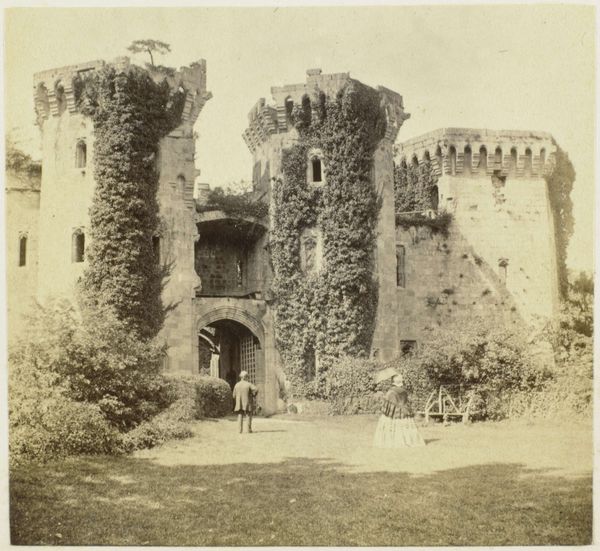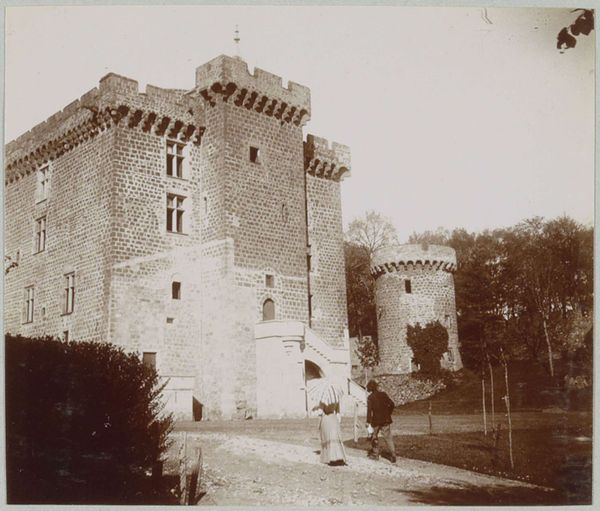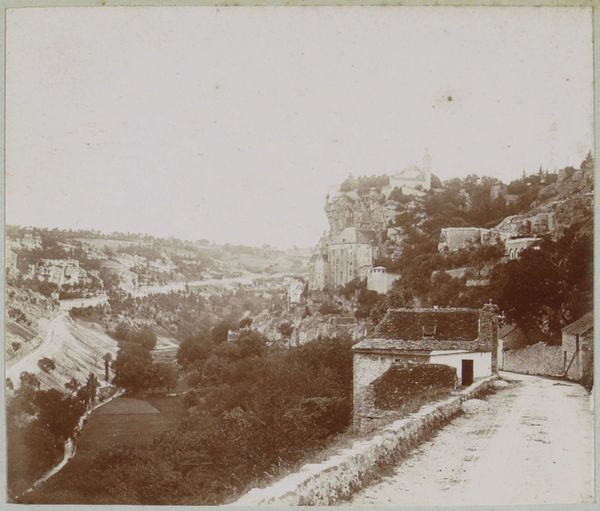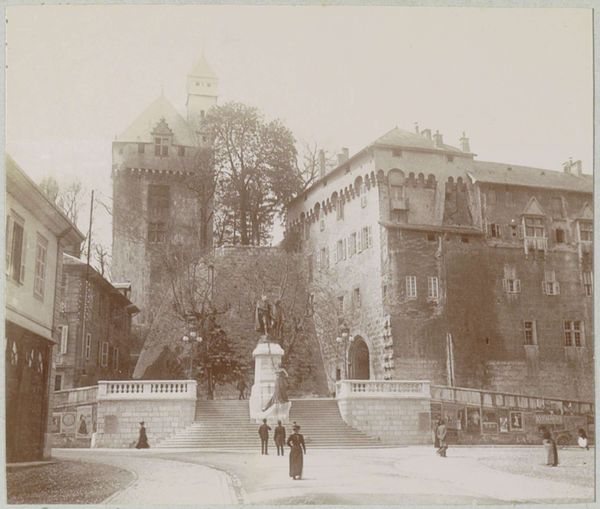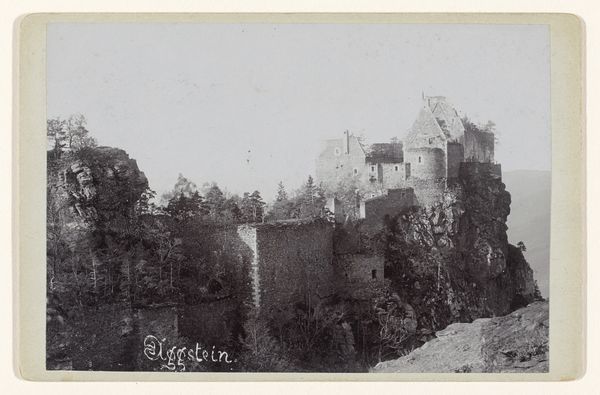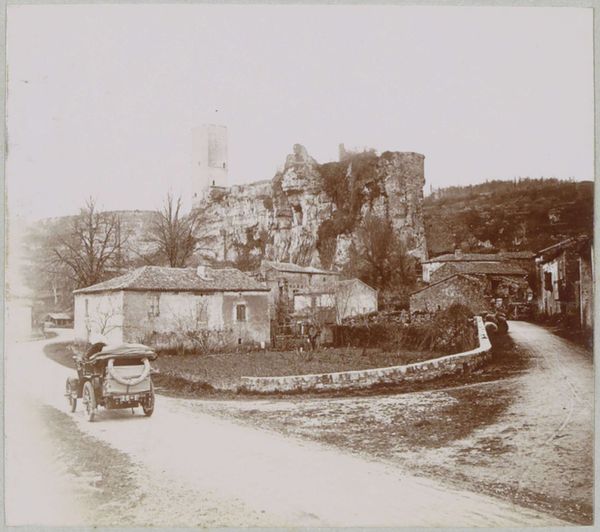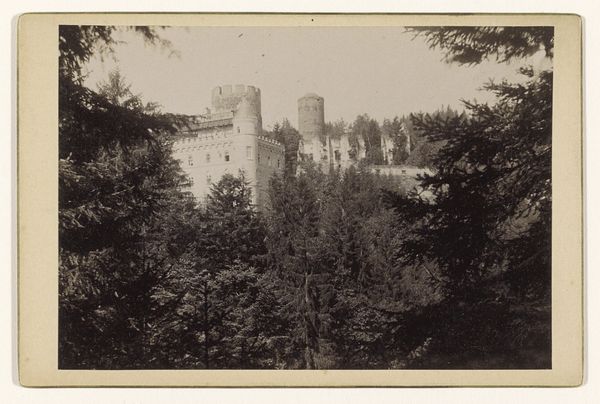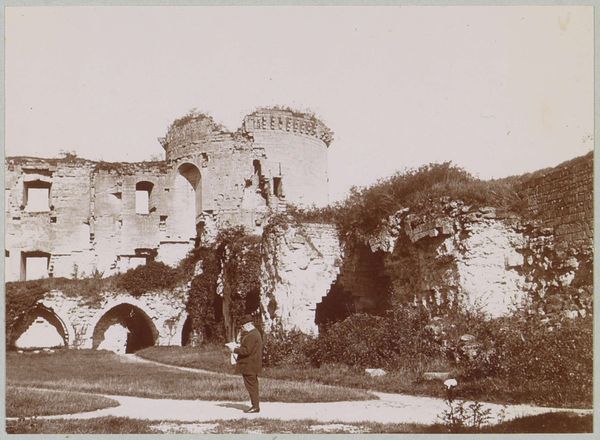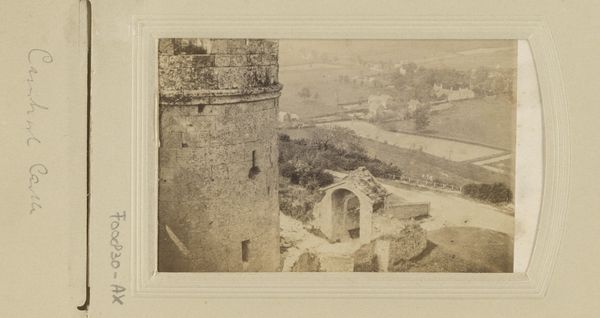
photography, albumen-print
#
medieval
#
water colours
#
landscape
#
photography
#
cityscape
#
watercolor
#
albumen-print
Dimensions: height 69 mm, width 82 mm
Copyright: Rijks Museum: Open Domain
Curator: This albumen print, entitled "Gezicht op de ruïne van het Kasteel van Coucy", offers us a glimpse into the medieval through a lens crafted, possibly, between 1902 and 1908. It now resides here at the Rijksmuseum. Editor: There's something inherently romantic, almost mournful, about this image. The soft focus, the muted tones...it evokes a sense of bygone eras. It looks more like a faded memory than a crisp representation of architecture. Curator: Absolutely. Consider albumen prints, though, as a commercial process. Think about who would have been consuming these images of the Chateau de Coucy around the turn of the century. Mass tourism was changing the consumption and production of landscapes, and that impacts how Delizy and others approached their work. Editor: Interesting point. This isn't just a sentimental gaze back to the past. This albumen medium involved a sophisticated, very labor-intensive technique, with a high degree of skilled labor. To prepare these images would have been quite complex, with each sheet of paper meticulously coated in albumen! We shouldn't ignore the economics of landscape photography at this time, the material investments. Curator: Exactly. It places photography firmly within a matrix of social practice. And while photography suggests immediacy, the image has been consciously framed and filtered for public consumption; it has a carefully cultivated vision of the past. Notice how the ruin dominates the picture? The Château de Coucy was a site deliberately destroyed during World War I as well! Delizy, whether directly or indirectly, makes commentary on what power means and on destruction as well. Editor: It becomes a powerful document in multiple senses: it’s capturing an actual physical space, using the photographic process that demands an assessment of economic structures involved. As we consume and study historical works like Delizy’s, we engage with the power of these works to elicit these questions from past to present, no matter their intentions or process. Curator: I agree. It certainly challenges simple assumptions about visual nostalgia and photography as pure objective representation. Editor: Ultimately, what might appear to be a quaint ruin scene encourages us to see how entwined are materiality and context.
Comments
No comments
Be the first to comment and join the conversation on the ultimate creative platform.
